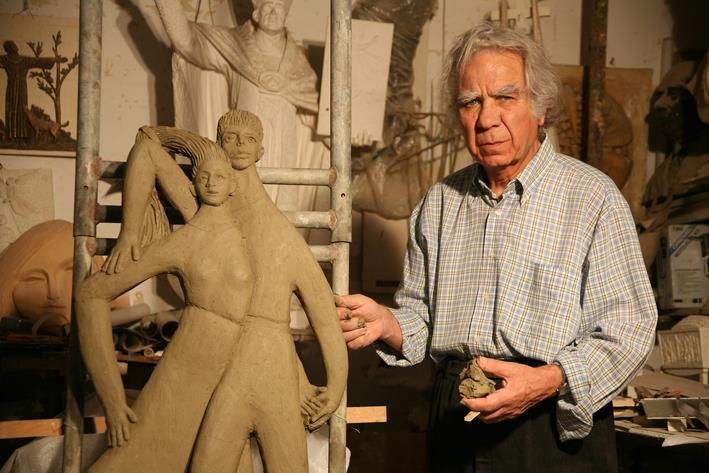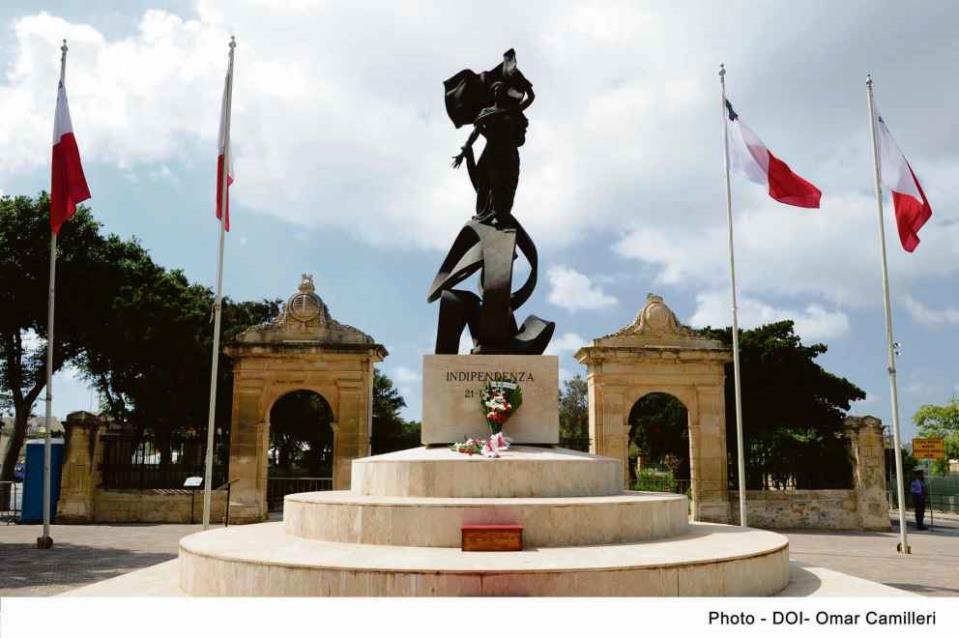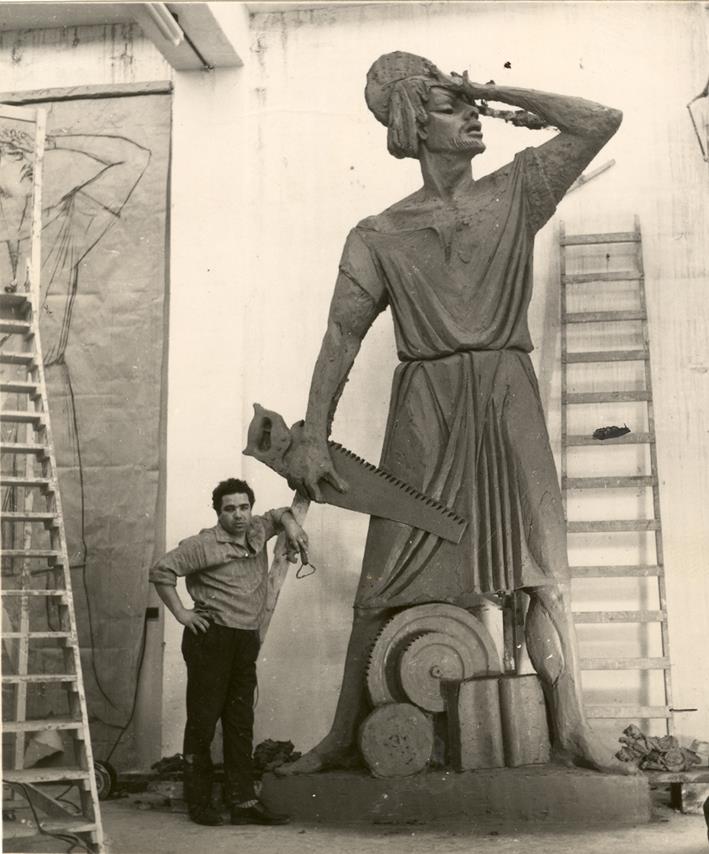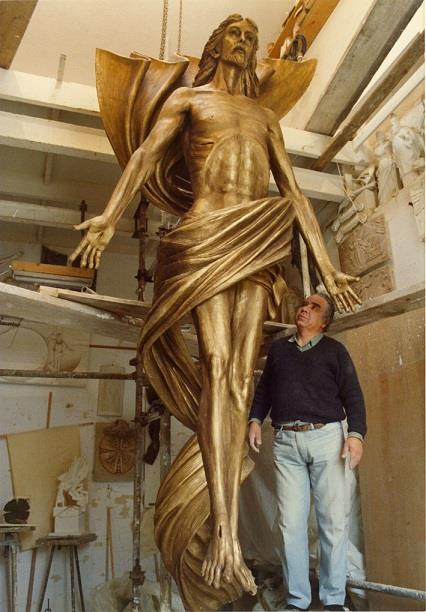Ganni Bonnici, sculptor, ceramist and medallist passed away earlier today, eighteen days short of his eighty-seventh birthday, his family said.
Ganni Bonnici was a leading figure among Maltese artists. Born on 4 September, 1932, Bonnici made a name for himself in the field of sculpture and is undoubtedly a pioneer in the field of modern ceramics in Malta. His uncommon talents have equally found expression in the field of medal, coin and stamp design.
He initiated his artistic training at the Malta School of Art where he studied between1945 and 1953 before moving to the UK to specialise in ceramics at the Ceramics College at Stoke-on-Trent. In 1954 he received a four-year scholarship to continue his studies at the Accademia di Belle Arti in Rome. He completed other diploma courses at the Scuola d`Arte Ornamentale for wood carving, at the Scuola d`Arte della Medaglia and the Istituto Statale d`Arte di Roma for ceramics.
At a later stage he studied in England at the University of London Institute Of Education, the Slade School of Art, Leicester Polytechnic College of Education and Loughborough University of Technology.
Bonnici was responsible for a large number of public monuments in Malta and abroad. These include St Joseph the Worker on the façade of the former St Joseph Secondary Technical School, Paola, Madonna Regina for the Maria Regina Girls’ Grammar School at Blata l-Bajda, St Francis of Assisi (1974) and the Madonna of Porziuncola (1975) for the Porziuncola Retreat House at Bahar ic-Caghaq, and the monument to Dr Nicola Zammit at Siggiewi.

His Marija Omm il-Maltin (1983) is a prominent feature on the façade of Burmarrad parish church. When it was installed it was described as a piece of sculpture ‘that arrests the attention because it is a work of art that combines many elements and many sentiments: Youth and maturity, simplicity and majesty, movement and repose, modernity and dignity, strength and delicacy.’
For the parish church of Santa Lucia he produced in marble the main altar and three holy-water fonts, the 14 Stations of the Via Crucis in stoneware, Christ on the Cross in cold-cast bronze, acclaimed for being ‘monumental, noble, dominant yet simple, plain, human’, the bronze tabernacle for the chapel of the Blessed Sacrament, and an 8-foot Madonna sculpted in wood.
In the mid and late 1980s Bonnici was involved in several works for the newly built parish church of St Sebastian in Qormi. Starting in 1983 with the tabernacle, he continued in 1986 with the 14 Stations of the Via Crucis in cold-cast bronze, the 12 bronze dedication crosses and the re-gilding of the processional statue of St Sebastian, followed in 1987 by the marble and bronze main altar and ambone, and in 1988 with Christ on the Cross in cold-cast bronze, the marble background and the bronze tabernacle for oil and balsam.
Bonnici was also responsible for the monuments commemorating the victims of World War II put up in Senglea, Mosta and Attard and more recently the bronze monument commemorating the 10th anniversary of the Works Division in Lija and the ANZAC monument at the Argotti gardens in Floriana.

In 1989, on the 25th anniversary of Malta’s Independence, the bronze and marble Independence Monument by Bonnici was inaugurated at the entrance to Il-Mall at Floriana. With a height of 28ft, it was to be not only the largest creation by Bonnici himself but perhaps the tallest statue-based monument in Malta. It represents an important milestone in Bonnici’s artistic career, not only for the national event it commemorates but for its iconographic merging of the abstract with the figurative as the female figure (an allegory of Malta) strides forward into the unknown as she liberates herself from the shackles of the past (symbolised by the abstracted bands beneath her) whilst tightly holding aloft the national flag in one hand.
Bonnici’s works can also be found in various European countries, Canada, Australia and USA. Between 1990 and 1994, Bonnici produced a larger than life-size statue of The Risen Christ, a 48-foot wide monument dedicated to the 26 martyrs of Japan, and a Via Crucis for the church of the Holy Martyrs of Japan in Bradford in Canada.

Ganni Bonnici had an equally distinguished career in the educational field. In 1974 he set up the Malta School of Arts and Crafts at Targa Gap where he occupied the post of head until his retirement in 1992. In 1982 he received the Italart award by the Associazione Nazionale d’Arti Culturale d’ Italia. This was followed in 1990 with the Malta Society of Arts, Manufactures and Commerce Gold Medal for his artistic achievements in sculpture, in 1993 with the Premio Citta` di Valletta organised by Editore Vincenzo Ursini di Catanzaro in collaboration with the association of Maltese poets and under the patronage of the President of Malta and in 1999 with Gieh il-Mosta.
In 2002 he was invested with the M.O.M. (Member of the National Order of Merit) by the Government of Malta for his artistic achievements.
Ganni Bonnici is survived by his wife Pauline and his two sons.
